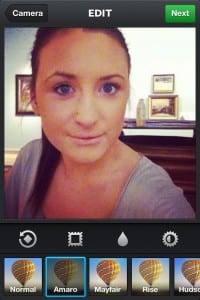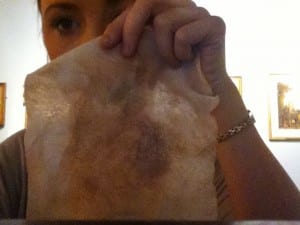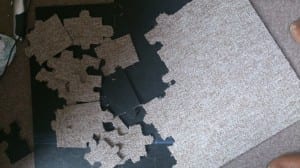With our sculpture continuing to be built, I thought I’d take some time to consider other parts of the performance. I was interested to read an article recently on the Pleasure of Treasure, a site specific piece based in London which gave people the opportunity to follow clues on a city-wide scavenger hunt. Since the piece was based in London, it was thought-provoking to read and in fact has some similar elements to the performance piece we are now creating. The Artangel group, initiated by Kathy Battista, recreated maps from 1868 merged with contemporary maps for those taking part. Our initial idea bore some relevance to this, as we discussed the idea that previously where the Usher Gallery stood it was just woodland, and the bringing together of what used to stand and what now does stand in the space was considered. We also had a chance to look at some older maps of Lincoln in the Lincolnshire Archives, which may have added an interesting element, as we discussed covering Big Ben with maps of London or Lincoln. This idea has evolved and we are now looking at incorporating both the history of the site and modern elements.
Another part we found struck a chord with us was the final effect the Artangel group wanted to produce with the walk. As we want the audience to consider their personal attachments to a city, the group wanted people to question ‘what they thought they already knew about… inner-city London’ (Battista et al. 2005, p.431). This idea of wanting people to query where they live and what they know about their roots and the city they feel comfortable in is prevalent in both site specific pieces. Along with this we also wanted to consider the ‘overlapping histories that make up urban space’ (Battista et al. 2005, p.439), in accordance with both London and Lincoln, with the idea that we’d be able to overlap both cities to create our own version. I feel this is somewhat close to what we are working towards, two intersections of historical places overlapped in order to become our own personal culture.
Although not much is documented about this particular site specific performance, other pieces by the Artangel group can be found on their website at www.artangel.org.uk.
References: Battista, Kathy et al (2005) ‘Exploring ‘an area of unnatural beauty’: a treasure hunt around King’s Cross, London’, Cultural Geographies, 12: 429-462.
Author: Lacey Cole



